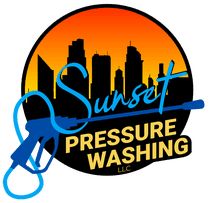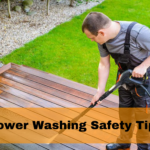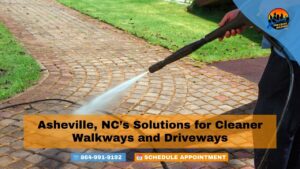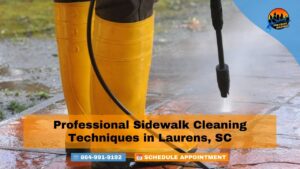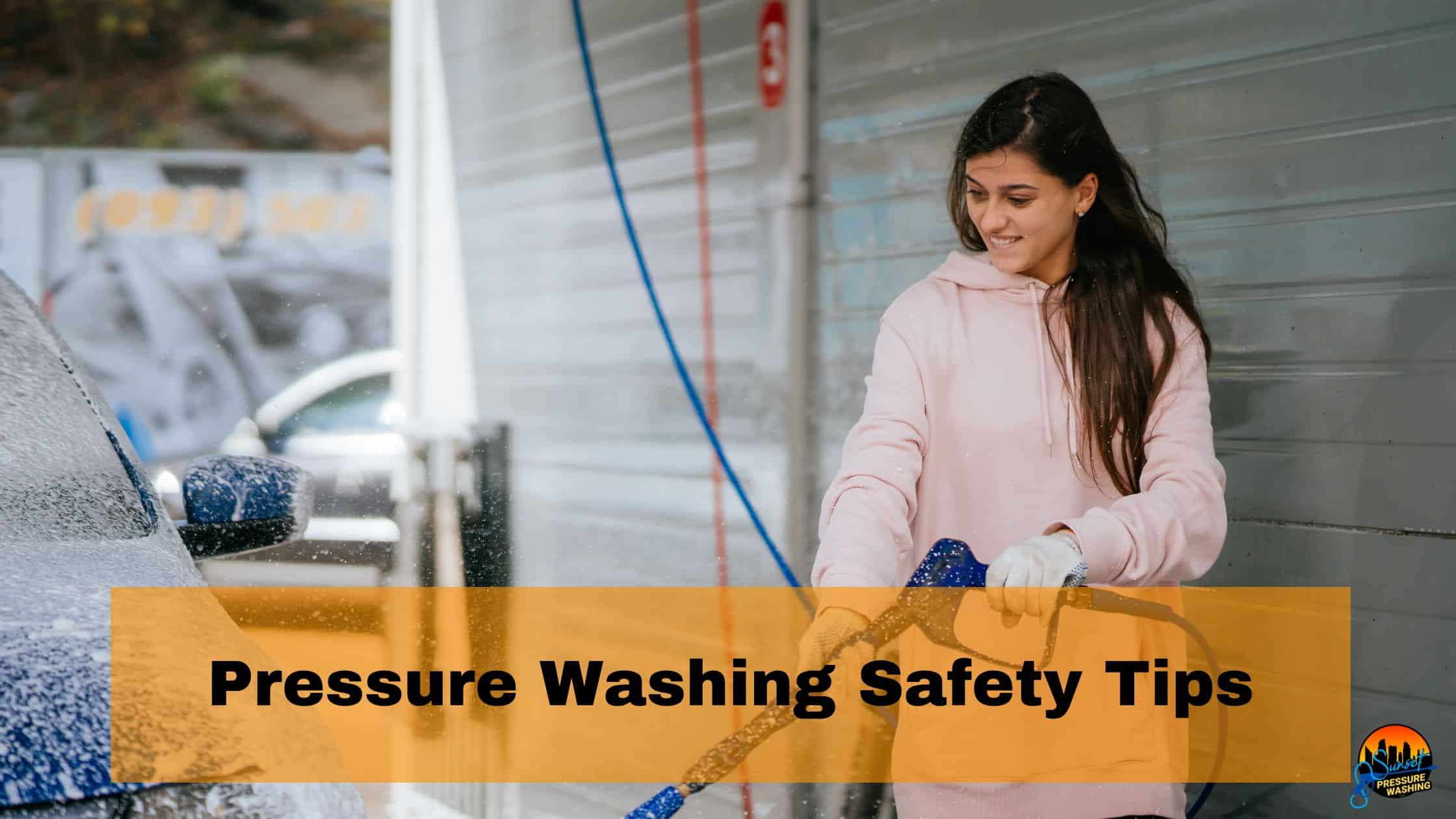
Pressure Washing Safety Tips
Pressure washing is an effective and efficient way to clean outdoor surfaces. However, it’s essential to prioritize safety while using these powerful machines. This guide provides key safety tips for pressure washing, ensuring you can get your cleaning done without incident.
Understanding Your Pressure Washer
Embarking on a pressure washing project begins with a thorough understanding of the equipment you are about to use. A pressure washer is a powerful tool that, if not handled correctly, can lead to accidents or damage. Here’s what you need to know:
Know Your Equipment
- Types of Pressure Washers: Pressure washers come in two primary types – electric and gas-powered. Each has its own set of features, benefits, and safety precautions. Electric models are generally quieter and easier to handle, while gas models are more powerful and mobile but require more stringent safety measures due to the presence of fuel.
- Read the Manual: This might seem obvious, but many overlook the importance of reading the user manual. Each pressure washer has its unique characteristics and operating procedures. The manual will provide essential information on setup, usage, maintenance, and safety features specific to your model.
Understanding PSI and GPM
- PSI (Pounds per Square Inch): This measures the pressure exerted by the water stream. High PSI ratings mean a more forceful stream, which can be effective for tougher stains but also more hazardous.
- GPM (Gallons Per Minute): This indicates the flow rate of water. A higher GPM means more water is being used for cleaning, which can make the cleaning process faster.
Safety Features
- Pressure Release Valves: These are designed to prevent over-pressurization and possible damage to the pressure washer.
- Thermal Relief: A thermal relief system helps to protect the pump from overheating when the trigger is not engaged.
- Lock-off Control: To prevent accidental operation, many pressure washers include a trigger lock or lock-off control.
Maintenance Insights
- Regular Check-ups: Regularly check hoses, nozzles, and guns for wear and tear. Look for leaks in the pump, which can be a safety hazard and reduce the efficiency of your washer.
- Winterizing: If you live in a cold climate, understand how to winterize your pressure washer to prevent damage from freezing temperatures.
Know Before You Start
- Identify the Task: Different tasks may require different pressure settings. For example, cleaning a wooden deck requires less pressure than cleaning concrete.
- Safety Precautions: Always be aware of your surroundings. Ensure that the area is clear of children, pets, and unnecessary bystanders.
Personal Protective Equipment (PPE)
When undertaking any pressure washing task, your safety should be the top priority. Personal Protective Equipment (PPE) plays a crucial role in ensuring you are safeguarded against the various risks posed by high-pressure water and debris. Here’s a guide to the essential PPE you should wear:
Eye Protection
This is the most important rule. Cleaning windows in direct sunlight can cause the cleaning solution to dry too quickly, leading to streaks and spots. The sun’s heat can also make the glass surface hot, which increases the rate of evaporation.
Skin and Hand Protection
- Durable Gloves: Gloves protect your hands not just from the high-pressure water stream, but also from cleaning chemicals and rough surfaces you may need to handle.
- Protective Clothing: Wear long pants and long-sleeved shirts to protect your skin from being directly hit by the high-pressure water stream, as well as from chemicals and debris. Clothes should be snug to avoid getting caught in the equipment but flexible enough to allow free movement.
Foot Protection
Non-slip, Steel-toe Boots: Your feet are vulnerable to injuries from falling objects, chemical spills, and wet surfaces. Boots with a steel toe and non-slip sole provide both protection and stability.
Hearing Protection
Ear Protection: Prolonged exposure to the noise from a pressure washer can be harmful to your ears. Use earplugs or earmuffs to protect your hearing, especially when using gas-powered models, which are typically louder than electric ones.
Respiratory Protection
Face Masks or Respirators (if using chemicals): If you’re using chemical cleaners, a face mask or respirator can protect you from inhaling harmful fumes. This is particularly important in enclosed or poorly ventilated areas.
Head Protection
Hard Hat (for commercial or overhead work): If you are working in an environment where there is a risk of falling objects, or if you are cleaning overhead surfaces, wearing a hard hat can provide crucial protection.
Additional Considerations
- Sun Protection: If you’re working outdoors, don’t forget about the sun. Use sunscreen, and consider a hat to protect your face and neck from sunburn.
- Avoid Loose Clothing and Jewelry: Loose-fitting clothes and jewelry can get caught in the equipment, posing a significant risk. Opt for well-fitted clothes and remove any dangling jewelry.
Preparing the Area
Before starting any pressure washing project, preparing the area is crucial for safety and effectiveness. This preparation involves several key steps to ensure a secure and conducive environment for your task. Here’s a guide to help you prepare your area properly:
Clearing and Securing the Site
- Remove Loose Objects: Clear the area of any movable items like outdoor furniture, plant pots, and garden decorations to prevent them from being damaged or becoming hazards when hit by the high-pressure spray.
- Cover or Protect Sensitive Areas: Shield vulnerable parts of your property, such as plants, electrical fixtures, or delicate surfaces, using tarps or plastic sheeting.
Establishing Safety Perimeters
- Create a Safe Zone: Keep people and pets away from the area to be pressure washed. Use barrier tape or cones, especially if working in a shared or public space, to demarcate the working area.
- Inform Others: If you’re in a shared or public space, notify those nearby of your pressure washing activity to ensure their safety and avoid surprises.
Protecting Property and Infrastructure
- Close Windows and Doors: Ensure all windows and doors near the cleaning area are securely closed to prevent water and debris intrusion.
- Safeguard Electrical Outlets: Cover outdoor electrical outlets and fixtures with waterproof covers to prevent water damage and electrical hazards.
- Surface Inspection: Examine the cleaning surface for any damage like cracks or loose elements that could be worsened by pressure washing.
Environmental and Health Considerations
- Consider Water Drainage: Plan where the water will drain, avoiding directing it towards sensitive areas such as gardens, pools, or storm drains.
- Chemical Use: If using detergents or chemicals, be aware of their impact on your surroundings, including plants and wildlife. Opt for environmentally friendly cleaners when possible.
- Check Weather Conditions: Avoid pressure washing in adverse weather conditions, such as heavy rain or strong winds, which can complicate the process and increase risks.
Final Preparations
Walkthrough the Area: Conduct a final check to ensure that everything is in place, hazards are minimized, and you have a clear, safe path for your pressure washing activity.
Handling Chemicals Safely
Using chemicals in pressure washing can greatly enhance cleaning efficiency, but it also introduces additional safety considerations. Handling these chemicals safely is paramount to protect yourself, others, and the environment. Here’s how to do it:
Understand the Chemicals You're Using
- Read Labels Carefully: Before using any chemical, read its label thoroughly. This includes understanding its purpose, the recommended dilution ratios, and any specific safety warnings.
- Material Safety Data Sheets (MSDS): For commercial-grade chemicals, refer to their Material Safety Data Sheets for detailed information on handling, exposure risks, and first-aid measures.
Personal Protective Equipment (PPE)
Wear Appropriate PPE: When handling chemicals, use gloves (preferably chemical-resistant), safety goggles, long-sleeved clothing, and masks or respirators if needed. This protects your skin, eyes, and lungs from harmful exposure.
Safe Mixing and Storage
- Mix Chemicals in Well-Ventilated Areas: Always mix chemicals outdoors or in a well-ventilated area to avoid inhaling fumes.
- Follow Manufacturer’s Instructions: Adhere strictly to the manufacturer’s guidelines for mixing. Incorrect ratios can lead to ineffective cleaning or even dangerous reactions.
- Proper Storage: Store chemicals in a secure, dry place away from children and pets. Ensure that the storage area is away from direct sunlight and extreme temperatures to prevent degradation or chemical reactions.
Application and Handling
Avoid Direct Contact: Never touch the chemicals with bare hands, and avoid splashing them on your skin. In case of contact, rinse immediately with plenty of water.
Environmental Safety
- Prevent Runoff: Be cautious about where the chemical-laden water is draining, especially if it could run into gardens, storm drains, or natural water bodies.
- Use Eco-Friendly Options: Whenever possible, choose environmentally friendly chemicals that are biodegradable and less harmful to the ecosystem.
Emergency Preparedness
- Know First Aid Procedures: Familiarize yourself with basic first aid procedures in case of accidental exposure, including eye rinsing techniques and emergency contact information.
- Spill Management: Have a plan in place for containing and cleaning up spills to minimize environmental impact and personal exposure.
Understanding Nozzles and Pressure Settings
In pressure washing, nozzles and pressure settings are fundamental components that dictate the effectiveness and safety of your cleaning. Choosing the right nozzle and setting for your task is crucial to avoid damage to surfaces and ensure efficient cleaning. Here’s what you need to know:
Types of Nozzles
- Zero-Degree Nozzles (Red): These nozzles emit a very narrow, powerful stream of water. Ideal for tough stains and hard surfaces but should be used cautiously due to their intensity.
- Fifteen-Degree Nozzles (Yellow): Offering a slightly wider angle, these are great for heavy-duty cleaning on concrete, brick, and other hard surfaces.
- Twenty-Five-Degree Nozzles (Green): A versatile choice, suitable for general cleaning tasks like decking, siding, and vehicles.
- Forty-Degree Nozzles (White): These provide a wider spray, making them perfect for delicate surfaces or larger areas like windows and fences.
- Soap Nozzles (Black): Designed for applying detergents, these nozzles produce a low-pressure spray suitable for delicate surfaces.
Understanding Pressure Settings
- High Pressure: Suitable for stubborn stains and hard surfaces like concrete. However, it’s vital to be cautious as high pressure can damage softer materials.
- Medium Pressure: A safer option for most common cleaning tasks, providing enough force for effective cleaning without significant risk of damage.
- Low Pressure: Ideal for delicate surfaces or when applying cleaning agents. This setting reduces the risk of harm to the surface and is often used in conjunction with soap nozzles.
Selecting the Right Nozzle and Pressure
- Assess the Surface: Consider the material and condition of the surface you’re cleaning. Fragile surfaces like wood or old masonry require a softer approach compared to concrete or metal.
- Distance and Angle: The distance of the nozzle from the surface and the angle at which you spray can impact the cleaning efficacy and risk of damage. Start at a lower pressure and increase as needed, and keep the spray at a safe angle to the surface.
- Test in a Small Area: Before starting the full job, test your chosen nozzle and pressure setting on a small, inconspicuous area to ensure it’s effective and not damaging.
Safety Considerations
- Never Use High Pressure on People or Animals: The force of high-pressure water can cause serious injuries.
- Be Cautious with Zero-Degree Nozzles: Given their intensity, these nozzles should be used only by experienced users and with extreme caution.
- Watch for Kickback: Higher pressure settings can cause the spray gun to kick back when triggered. Be prepared and maintain a firm grip.
Safe Operation Techniques
Operating a pressure washer safely is crucial to prevent injuries and property damage. While pressure washers are powerful and effective tools, they require careful handling and awareness of safety practices. Here’s how to operate your pressure washer safely:
Understanding Your Equipment
- Know Your Pressure Washer: Familiarize yourself with the controls, features, and safety mechanisms of your pressure washer. This includes knowing how to quickly shut it off in case of emergency.
- Check for Faults: Before use, inspect the pressure washer for any signs of wear, leaks, or damage, especially in hoses and connections.
Proper Handling
- Firm Grip and Stance: Always hold the pressure washer gun with both hands and maintain a stable, balanced stance. This helps manage the force of the water stream and the kickback when you start the spray.
- Never Point at People or Animals: The high-pressure stream can cause severe injury. Never direct the spray towards people, pets, or delicate surfaces that can be easily damaged.
Using the Pressure Washer
- Start with Low Pressure: Begin with the lowest pressure setting, then gradually increase as needed. This approach is safer and helps you gauge the appropriate pressure for the task.
- Control the Spray: Keep the nozzle moving to prevent the water from continuously hitting the same spot, which can cause surface damage.
- Safe Distance: Maintain a safe distance between the nozzle and the surface. Starting too close can damage the surface, and being too far can reduce cleaning effectiveness.
Environmental Awareness
- Be Aware of Surroundings: Keep a constant watch on your surroundings. Be mindful of obstacles, slippery surfaces, electrical hazards, and bystanders.
- Avoid Ladders When Possible: Using pressure washers while on ladders can be dangerous due to the force of the spray and risk of falling. Use extension wands for high areas.
Shutting Down and Post-Use
- Relieve Pressure Before Disconnecting: After use, turn off the machine and squeeze the trigger to release any remaining pressure before disconnecting hoses or attachments.
- Proper Storage: Store your pressure washer and accessories in a safe, dry place. Ensure it’s out of reach of children and not exposed to freezing temperatures without proper winterization.
Avoiding Electric Hazards
Using an electric pressure washer efficiently and safely requires careful attention to avoid electrical hazards. Here’s how to mitigate these risks effectively:
Inspect Electrical Equipment
- Check for Damage: Before use, inspect all electrical components of your pressure washer, including the cord and plug, for any signs of wear or damage.
- Use Intact Extension Cords: If an extension cord is necessary, ensure it is rated for outdoor use, in good condition, and free of cuts or frays.
Use of Ground Fault Circuit Interrupter (GFCI)
Implement GFCI Protection: Always plug your electric pressure washer into a GFCI outlet. This device will automatically shut off power if it detects an imbalance, reducing the risk of electric shock.
Keep Equipment Dry
Avoid Water Exposure: Keep the pressure washer and all electrical connections away from water. This includes avoiding puddles and ensuring your working area is dry.
Safe Operating Environment
- Weather Considerations: Do not use the pressure washer in wet conditions, such as rain or snow, which significantly increase the risk of electrical hazards.
- Dry Hands While Handling: Ensure your hands are dry when plugging in and operating the pressure washer, and never touch the plug or socket with wet hands.
Proper Handling and Storage
- Disconnect Properly: After use, turn off the pressure washer and unplug it before performing any maintenance or cleaning. Ensure the equipment is completely dry before storing.
- Safe Storage: Store your pressure washer and all electrical cords in a dry, safe area to prevent damage and reduce the risk of electrical accidents.
Dealing with Gasoline Safely
Using a gasoline-powered pressure washer comes with the responsibility of handling fuel safely. Gasoline is highly flammable and can be hazardous if not managed properly. Here are essential safety tips to consider:
Safe Refueling
- Cool Down Before Refueling: Always turn off the pressure washer and let it cool down before refueling. Gasoline can ignite if it comes into contact with a hot engine.
- No Smoking: Never smoke near gasoline. Keep the refueling area free from open flames or any source of sparks.
- Ventilation is Key: Refuel in a well-ventilated area, preferably outdoors, to prevent the accumulation of gasoline fumes.
Proper Storage of Gasoline
- Approved Containers: Store gasoline in containers specifically designed for fuel storage. These containers are usually made of metal or special plastics and are equipped with flame arresters.
- Keep Away from Heat Sources: Store gasoline in a cool, well-ventilated area away from direct sunlight, heaters, and other sources of heat or ignition.
Handling Spills
- Immediate Action: In case of a gasoline spill, clean it up immediately using an absorbent material like kitty litter or sand, and then dispose of it properly.
- Avoid Water Contamination: Ensure that gasoline does not enter drainage systems or water bodies, as it can be harmful to the environment and wildlife.
Transporting Gasoline
Secure Transportation: When transporting gasoline, ensure the container is well-sealed and placed in a stable position where it won’t tip over. Avoid leaving gasoline in a car for extended periods, especially on hot days.
Personal Safety
- Avoid Inhalation and Skin Contact: Avoid inhaling gasoline fumes and minimize skin contact. If you do come into contact with gasoline, wash the affected area immediately with soap and water.
- Be Prepared for Emergencies: Have a fire extinguisher rated for flammable liquids nearby and know how to use it. Be familiar with the quickest way to call for help in case of a fire.
Maintenance and Storage
Maintaining your windows regularly is key to prolonging their lifespan and ensuring they always look their best. Regular maintenance not only keeps windows sparkling but also helps identify and address any potential issues before they become major problems. Here’s a guide to effective window maintenance:
Routine Maintenance
- Check Hoses and Connections: Regularly inspect hoses for cracks, leaks, or weakening. Ensure that all connections are tight and secure to prevent accidents.
- Nozzle and Filter Cleaning: Clean the nozzles to remove any clogs and check the filters for any debris buildup. A clogged nozzle or filter can affect the pressure washer’s performance.
- Pump and Engine Care: For gas-powered models, check the engine oil level before each use and change it as recommended in the manual. For all models, ensure the pump is well-lubricated and functioning smoothly.
- Surface Inspection: After each use, clean the exterior of the pressure washer to remove dirt, grime, or chemical residue.
End of Season or Long-term Storage
- Drain Water: To prevent damage from freezing or corrosion, drain all water from the machine, hoses, and pump.
- Winterize if Necessary: In cold climates, use antifreeze specifically designed for pressure washers to protect the pump and internal components from freezing.
- Fuel Treatment: For gasoline models, either drain the fuel tank or add a fuel stabilizer to prevent the gasoline from degrading and damaging the engine.
Safe Storage Practices
- Dry and Ventilated Area: Store your pressure washer in a dry, well-ventilated area to prevent rust and corrosion. Avoid areas with extreme temperature fluctuations.
- Elevated Surfaces: Keep the pressure washer off the ground on a stable surface to protect it from moisture and accidental damage.
- Child Safety: Ensure that the pressure washer and its accessories are stored out of reach of children.
Pre-Season Checks
Review Before Use: At the start of a new season or after a long storage period, perform a comprehensive check of the pressure washer. Look for any signs of damage or wear and test its functionality before commencing a major cleaning task.
Professional Services
Opting for professional pressure washing services can be a wise choice for many reasons. Whether you’re facing a particularly tough job, lack the necessary equipment, or simply prefer the assurance of a professional touch, these services offer numerous benefits.
Expertise and Experience
Professional pressure washing companies bring a wealth of experience to the table. They understand the nuances of different surfaces, the appropriate pressure settings, and the most effective cleaning agents for each job. Their expertise ensures that the cleaning is thorough, efficient, and, most importantly, safe, preventing damage to your property.
Advanced Equipment
Professionals have access to high-grade, commercial pressure washers that are more powerful and effective than typical consumer models. They also have a variety of nozzles and attachments to tackle specific tasks, be it a gentle wash for your home’s siding or a more robust cleaning for a concrete driveway.
Time and Convenience
Hiring professionals saves you time and effort. Pressure washing can be a time-consuming task, requiring setup, cleaning, and then packing away equipment. Professional services handle all aspects of the job, allowing you to focus on other important tasks or simply enjoy your free time.
Safety
Pressure washers, particularly commercial-grade models, can be dangerous if not handled correctly. Professional pressure washers are trained in safety protocols to avoid accidents and injuries. They also come equipped with the necessary safety gear to protect themselves and your property.
Environmental Compliance
Professional pressure washing services are often more environmentally friendly. They typically use eco-friendly cleaning solutions and are aware of the local regulations regarding water runoff and chemical usage, ensuring that the job is not only effective but also environmentally responsible.
Cost-Effectiveness
While hiring professionals might seem like an added expense, it can actually be cost-effective in the long run. By ensuring the job is done right the first time, they help avoid potential damage to your property, which could result in costly repairs. Furthermore, the longevity of a professional clean can often outweigh the cost of regular DIY cleaning.
Choose Sunset Pressure Wash for Professional and Safe Pressure Cleaning
When it comes to maintaining the cleanliness and aesthetic appeal of your property, professional pressure washing services are an indispensable tool. That’s where Sunset Pressure Wash steps in, offering an unmatched level of expertise, efficiency, and safety in pressure washing. Our team of skilled professionals is well-versed in handling all kinds of pressure washing needs, ensuring that your property, whether it’s a residence or a business, receives the highest quality care.
At Sunset Pressure Wash, we understand that every property is unique, which is why we offer a wide range of pressure washing services tailored to meet your specific requirements. Whether it’s revitalizing a faded deck, cleaning a stained driveway, or restoring the look of your siding, our services are designed to effectively tackle any challenge. By choosing us, you not only benefit from our state-of-the-art equipment and eco-friendly cleaning solutions but also from our commitment to delivering outstanding results with utmost safety. We invite you to explore the array of services we offer by visiting Sunset Pressure Wash Services.
Our dedication to customer satisfaction is the cornerstone of our business. We believe in building lasting relationships with our clients by ensuring that every job is completed to the highest standards of quality and safety. Transparency in pricing, punctuality, and professional conduct are just a few of the aspects that set us apart in the pressure washing industry. To learn more about how we can transform your property with our professional pressure washing services, visit us at Sunset Pressure Wash. We’re here to help you rejuvenate your property and bring back its original charm and beauty.
